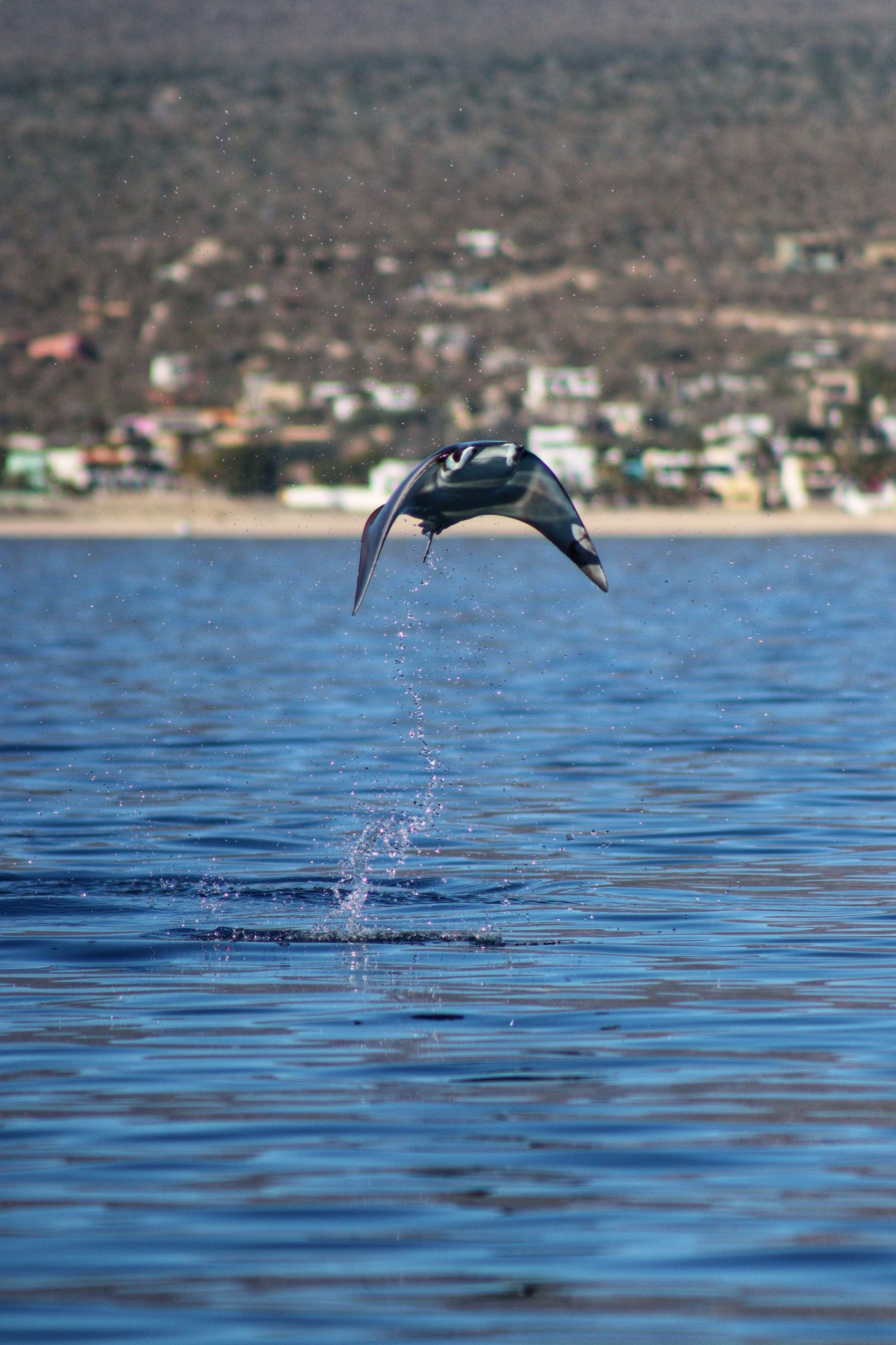The moment I slipped beneath the surface of the Sea of Cortez, the world changed. The warm waters of La Ventana cradled me as sunlight filtered through the waves, casting shimmering patterns on the ocean floor. Then, I saw them—the mobula rays.
At first, they were shadows in the distance, moving with a quiet grace. As I swam closer, their beauty became undeniable. Their dark, wing-like fins moved in a slow, hypnotic rhythm, their bodies gliding through the water like dancers in a silent performance. Their undersides were pale and smooth, with intricate markings that seemed as unique as fingerprints.
I hovered in awe, letting the scene unfold around me. The rays swam together in a synchronized flow, their movements so effortless they seemed weightless. Then, with a sudden burst of energy, one broke away, shooting toward the surface. My eyes followed, and just as I reached the surface myself, I saw it—leaping into the air, flipping and spinning before crashing back into the water.
Another followed, then another. From beneath the surface, it was magical—the sunlight caught the water droplets, and their shadows danced below. On the surface, the sight was just as thrilling. Mobula rays launched themselves skyward, twisting and somersaulting before slapping the water with a loud splash.
I couldn’t stop smiling. It was as if they were celebrating, their joy so contagious it filled me too. I later learned their leaps aren’t just playful; they serve a purpose. Mobulas may jump to shake off parasites, attract mates, or communicate with others in their group. But watching them, it felt like more than biology—it felt like art.
These rays have captured human curiosity for centuries. Ancient fishermen spoke of their acrobatics, and scientists trace their lineage back millions of years. Their evolution has shaped them into creatures of grace, power, and resilience—a perfect fit for their watery home.
Being among them, I felt an overwhelming sense of connection to the ocean and its creatures. They moved with such elegance and purpose, a reminder of how beautifully the natural world balances survival and artistry.
As I floated in the water, watching the rays beneath me and above, I felt small in the best way. Moments like these remind me why I dive—to feel part of something far greater than myself.
Later, as the sun set over La Ventana, I thought about how lucky I was to witness this spectacle. But with that gratitude came a sense of responsibility. Mobula rays, like so many marine creatures, face growing threats from overfishing and habitat loss. Protecting their home is crucial—not just for them, but for the balance of life in these waters.
Diving with the mobula rays wasn’t just an adventure. It was a gift, a reminder of the ocean’s beauty, and a call to cherish and protect it. La Ventana had offered me something extraordinary: a glimpse into the world of these incredible creatures and a memory I’ll carry forever.


